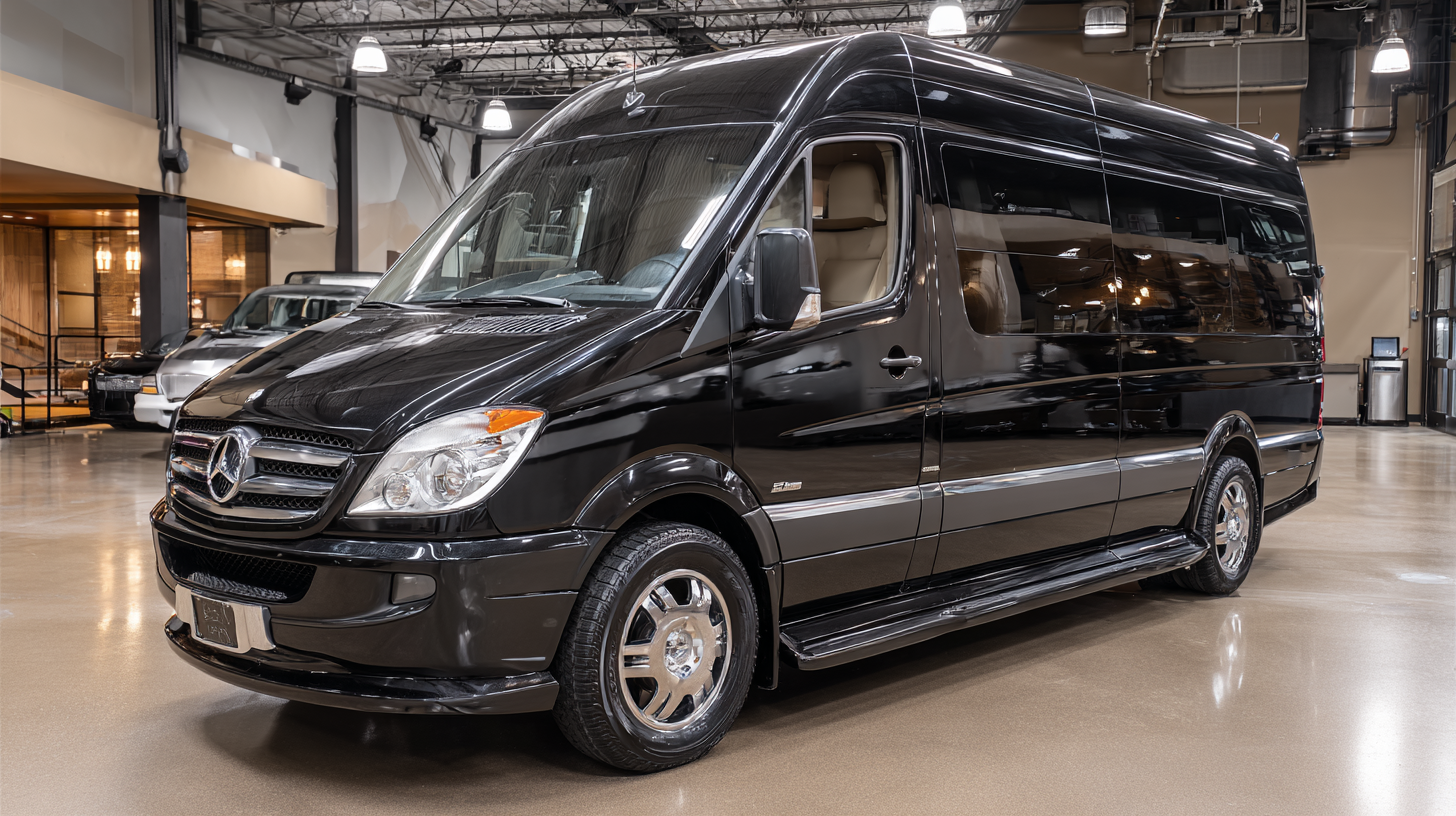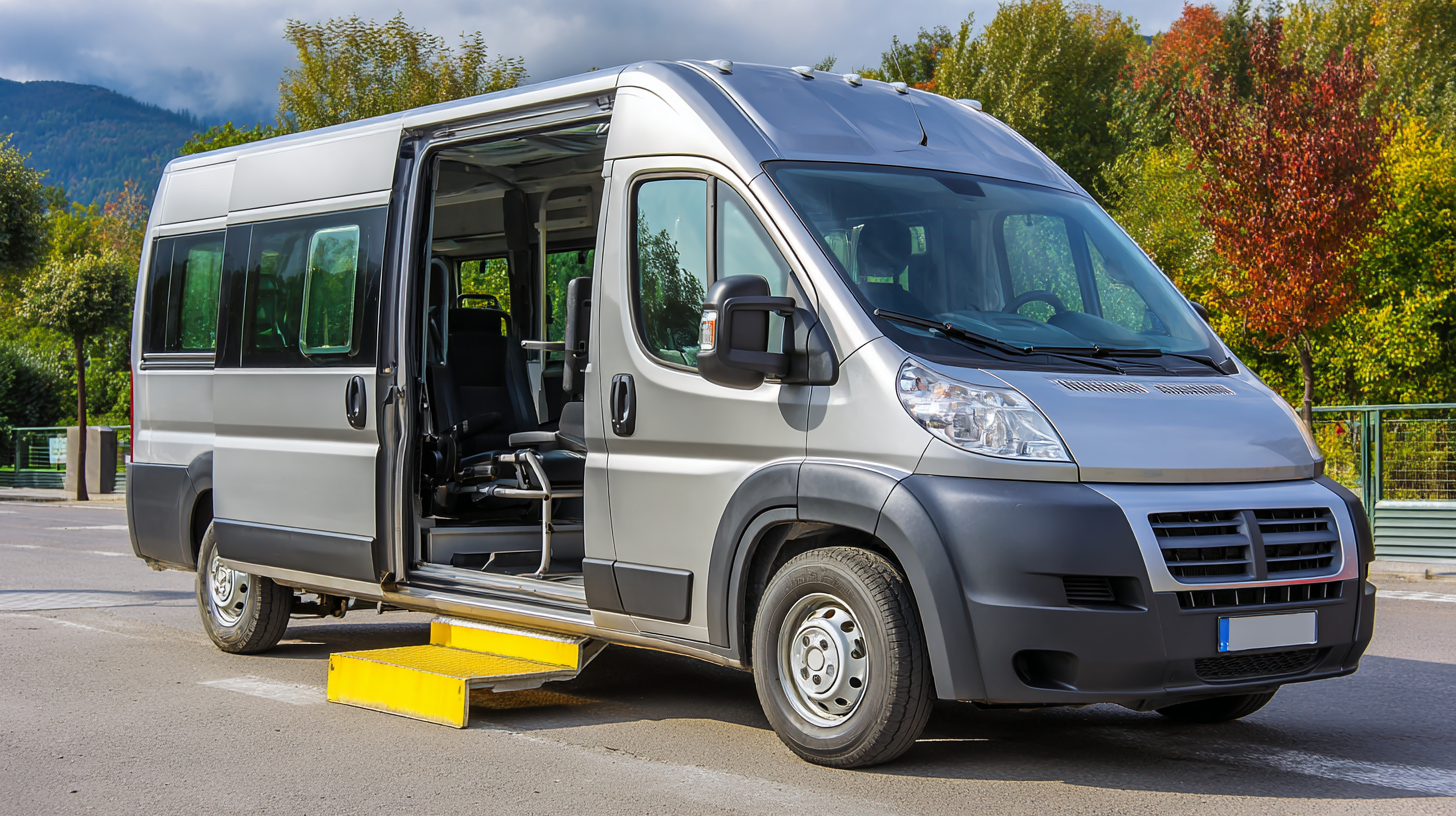Top Strategies for Choosing the Best Handicap Van for Your Unique Needs
When it comes to selecting the right handicap van, the process can often feel overwhelming due to the myriad of options available and the specific needs of the individual. Whether you're purchasing a vehicle for yourself or a loved one, ensuring that it meets unique requirements for comfort, accessibility, and safety is paramount. The right handicap van can greatly enhance mobility and independence, providing the freedom to travel without hindrance.
In this blog, we will explore the top strategies for choosing the best handicap van tailored to your unique needs. By focusing on critical factors such as vehicle type, accessibility features, budget considerations, and personal lifestyle, you can make an informed decision that enhances quality of life and fosters independence.
Join us as we guide you through this important journey towards finding the perfect vehicle that suits your specific requirements.
Understanding Your Unique Accessibility Requirements for a Handicap Van
When selecting a handicap van tailored to your unique accessibility needs, it's crucial to first understand those specific requirements. A study by the National Highway Traffic Safety Administration indicates that nearly 20% of Americans live with some form of disability, emphasizing the importance of finding a vehicle that caters to individual mobility challenges. Factors such as wheelchair size, type of mobility device, and the frequency of use play pivotal roles in determining the best van option.
Additionally, a report from the American Association of People with Disabilities highlights that many individuals require adaptations ranging from ramp sizes to customized seating configurations. For instance, the ideal ramp slope should be no steeper than 1:12 to ensure safe, easy access for wheelchair users, as supported by the Americans with Disabilities Act (ADA). By carefully assessing your unique accessibility requirements, you can make an informed decision that maximizes your independence and comfort in daily transportation.
Key Technical Features to Consider in Handicap Vans
When selecting the best handicap van tailored to your unique needs, understanding the key technical features is crucial. Firstly, examine the type of wheelchair access system the van offers. There are generally two options: a ramp or a lift. Ramps are often lighter and easier to operate, making them ideal for quick access. On the other hand, lifts can accommodate larger wheelchairs, providing more versatility but may require additional space and maintenance. Consider your daily requirements and choose a system that fits seamlessly into your lifestyle.
Another essential aspect to consider is the interior space and seating configuration. Evaluating the van's dimensions will help ensure it meets your needs, whether you require ample room for additional passengers or storage for mobility devices. Adjustable seating can also enhance comfort and accessibility. Lastly, don’t forget to check the van's safety features, such as tie-down systems for securing wheelchairs and anti-lock brakes, which can significantly impact overall driving security. By prioritizing these technical elements, you can make an informed choice that enhances your independence and mobility.
Evaluating Different Types of Wheelchair Lifts and Ramps
 When selecting a handicap van, understanding the different types of wheelchair lifts and ramps is crucial for ensuring ease of access and safety. Wheelchair lifts are often categorized into hydraulic lifts and electric lifts. Hydraulic lifts are known for their smooth operation and durability, making them a popular choice for heavier wheelchairs. On the other hand, electric lifts tend to be more portable and can be easily used in various settings, making them ideal for those who travel frequently.
When selecting a handicap van, understanding the different types of wheelchair lifts and ramps is crucial for ensuring ease of access and safety. Wheelchair lifts are often categorized into hydraulic lifts and electric lifts. Hydraulic lifts are known for their smooth operation and durability, making them a popular choice for heavier wheelchairs. On the other hand, electric lifts tend to be more portable and can be easily used in various settings, making them ideal for those who travel frequently.
When evaluating ramps, consider the material and surface texture. Aluminum ramps are lightweight and rust-resistant, perfect for long-term outdoor use. Meanwhile, rubberized surfaces provide excellent traction, minimizing the risk of slipping during wet conditions. It's essential to measure the incline to ensure it's not too steep, which could hinder easy access.
Tips: Always check weight capacity before purchasing any lift or ramp, as this can vary between models. Additionally, try to test the lift or ramp yourself to ensure it meets your specific needs before making a final decision. Finally, consult with healthcare professionals or mobility experts to gain insights tailored to your unique circumstances.
Comparing Fuel Efficiency and Maintenance Costs of Handicap Vans
When choosing a handicap van, understanding fuel efficiency and maintenance costs is crucial for making a financially sound decision. According to the U.S. Department of Energy, the fuel economy of wheelchair-accessible vans generally ranges between 15 to 25 miles per gallon (mpg), depending largely on the vehicle's make and model. For instance, newer models equipped with advanced fuel-saving technologies tend to perform better, offering an 18% increase in fuel efficiency compared to older variants. This boost not only helps in saving costs at the pump but also contributes to a smaller carbon footprint for users.

Maintenance costs also play a significant role in the total ownership experience of a handicap van. The National Automobile Dealers Association (NADA) reports that maintenance expenses for adaptive vehicles can range from $500 to $1,000 annually, depending on the vehicle's age and usage. Factors such as the frequency of repairs, availability of parts, and the dealership's service rates significantly influence these costs. It's essential to consider models known for their reliability and lower maintenance rates, as this can lead to substantial long-term savings. By weighing these factors, buyers can select a van that not only meets their accessibility needs but also fits their budget over time.
Exploring Customization Options for Maximum Comfort and Functionality
When selecting a handicap van, customization is crucial to ensure maximum comfort and functionality for the user. According to a report by the National Highway Traffic Safety Administration (NHTSA), over 19% of individuals with disabilities face mobility challenges, underscoring the importance of tailored vehicles that meet their specific needs.
Customization options can include adaptive seating, access ramps, and hand controls designed to enhance accessibility. These modifications are not only about convenience but also ensure that users retain their independence and dignity.
Furthermore, a recent study by the Rehabilitation Engineering and Assistive Technology Society of North America (RESNA) highlights that properly customized vehicles can significantly improve the quality of life for individuals with mobility impairments. Features such as adjustable seating positions allow for easier transfers from wheelchairs, while advanced technology like smart controls can accommodate various disabilities, promoting inclusivity.
Investing in a well-equipped handicap van is essential to provide both functional transportation and an elevated level of comfort tailored to individual needs.